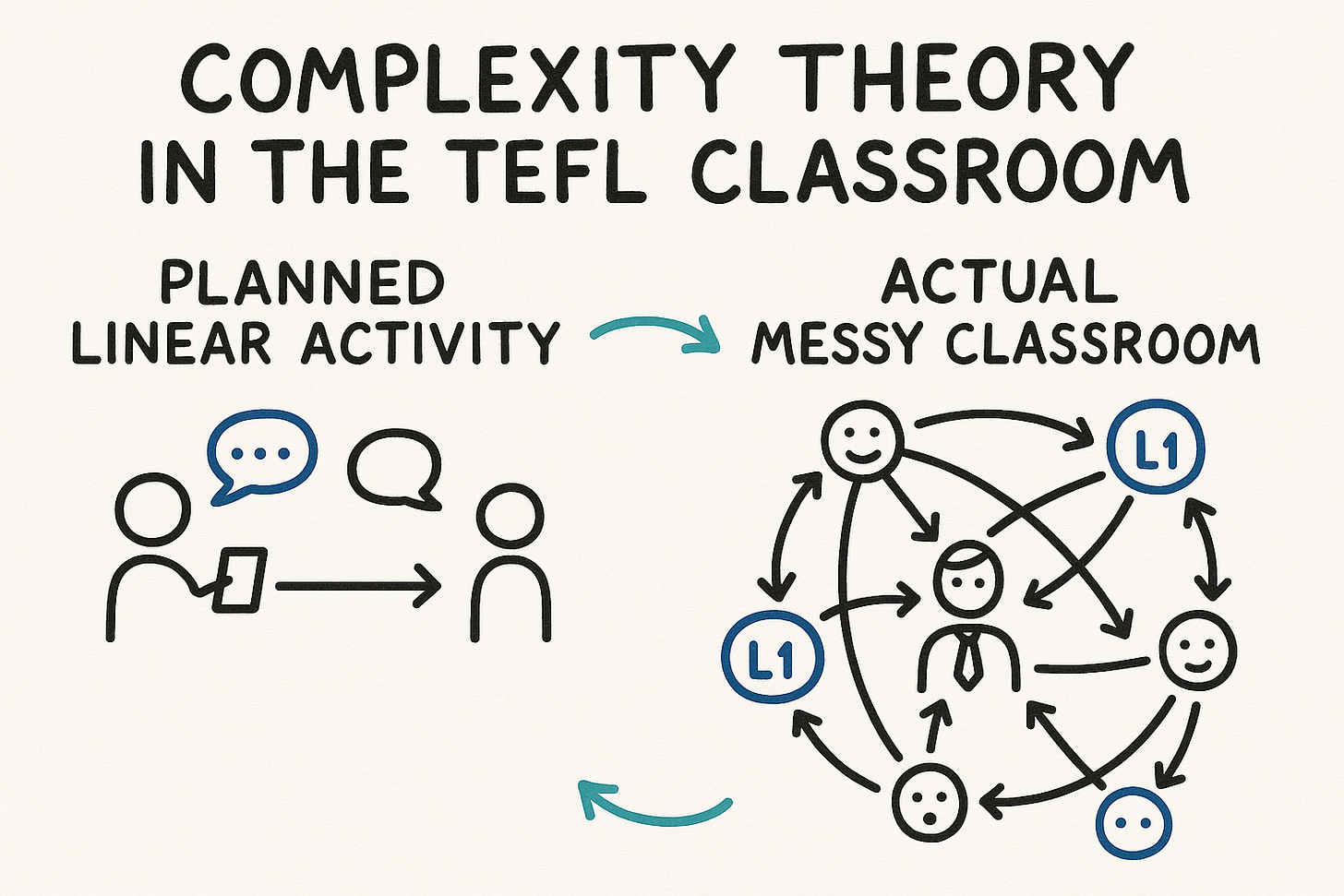Complexity Theory in the TEFL Classroom
Your classroom isn't a machine, it's order out of swirling chaos.
You plan a pair-work speaking activity. It looks simple: give students a role play card, they practise, then share with the class.
On paper, the steps are clear. In practice? One pair chats in L1, another races through the task in two minutes, one group spends the whole time debating a single word, and another invents an entirely new dialogue that makes the class laugh.
Same task, different outcomes. That’s complexity.
What complexity theory says
Complexity theory looks at systems (like classrooms) where patterns come from lots of small interactions. You can’t predict them in advance - but you can guide them.
Key principles, in plain English:
Non-linearity - small changes can have big effects. A single student’s enthusiasm can lift the whole room, or one confusing word can derail ten minutes.
Feedback loops- jokes, energy, confusion all ripple out and get reinforced.
Emergence - new patterns appear that you didn’t plan, like students creating their own dialogues.
Adaptation - students change their behaviour as they learn, copy each other, or adjust to your rules.
Networks - who talks to who matters as much as what the task is.
How to work with complexity
Instead of trying to control everything, you can probe, sense, and respond.
In our role play example:
Probe - Run the activity in three different formats with small tweaks (e.g. time limit, change partners, add a prop).
Sense - Watch where energy and language use peak or dip. Which tweak gets more English, more laughter, or better focus?
Respond - Keep the good version, drop the ones that fizzled.
What not to do
Don’t expect one “best practice” to always work.
Don’t assume repeating the same plan gives the same results.
Don’t kill off spontaneity by over-controlling.
Why it matters
Classrooms are living systems, not machines. Complexity theory doesn’t make them predictable - but it gives you tools to work with the mess.
Next time you see a role play go off in five directions, don’t panic. That’s the system teaching you.
Your job is to notice the patterns, keep the ones that help, and gently steer the rest.
Good luck!
If you liked this article, you’ll love my books:
📝 Lesson Planning for Language Teachers - Plan better, faster, and stress-free.
👩🎓 Essential Classroom Management - Develop calm students and a classroom full of learning.
🏰 Storytelling for Language Teachers - Use the power of storytelling to transform your lessons.
🤖 ChatGPT for Language Teacher 2025 - A collection of AI prompts and techniques to work better, faster.
💭 Reflective Teaching Practice Journal - Improve your teaching in five minutes daily.




I enjoyed this article. Thank you for your post. I write short story memoir about my TEFL experiences abroad, should you be interested.